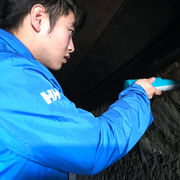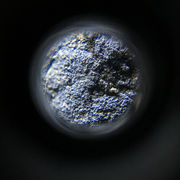
洞窟の土質等の検証を埼玉大学小口准教授の研究室の協力を得ながら洞窟を包む地質の工学的な調査を進めています。
-
データ精査の結果から、洞門密閉改修の必要性を定泉寺へ提言。
-
公益財団法人東日本鉄道文化財団より密閉洞門改修事業の助成を受託。
Geological field survey
地盤地質 現地確認
洞内で考察できる「地層の切れ目」や「貝化石」は時間をかけて現地考察します。また、近隣周辺の地質の観察も実施しています。
Sampling
サンプリング
定泉寺の許可を得て、洞内2か所でサンプリングを実施しています。サンプル試料を実験室に持ち帰り、様々な室内試験を行っています。
Temperature and Humidity monitoring in Taya Cave
洞内温湿度モニタリング調査
洞内の風化の状況を調べるために、洞内にデータロガーというセンサーを設置しています。洞内外の温湿度を1時間に1回のペースでモニタリングをしています。
Thermostat photography survey
サーモスタット撮影調査
洞内の温度変化の状況をビジュアル化できるか、サーモスタットカメラを使用して撮影調査を実施しました。洞壁面の温度計測を実施。洞内の微妙な温度変化の時間的変化を動画でとらえることが出来ないか撮影を試みました。結果は、非常に微動の変化で温度変化の時間的変化の動画化はうまく撮影できませんでした。
機材協力:横浜市
Destructive Test(in the Labo)
破壊試験(室内試験)
定泉寺の許可を得て洞内よりサンプリングした資料を基に、埼玉大学で破壊試験を実施しています。また、乾湿繰返し試験も行い、洞内の地盤の風化条件を把握するための基礎的な試験を実施しています。
Non-destructive Test(on-sight)
非破壊試験(現場試験)
実際の洞窟内で非破壊検査も実施しています。洞壁に残るノミ跡を傷つけないように注意を払い、反発力や超音波伝達試験などを実施しています。
Analysis of surface precipitated phases in the cave
洞内表面析出物分析
洞内の壁(洞壁)には、様々な色の物質が固着しています。これらの析出物は長い年月をかけて里山の地表に降った雨水や地下水などにより地中で変質して析出されたものです。これらの析出物を分析してどのような成分が出てきているのかを調査しています。
CO2 Survey
洞内二酸化炭素測定
洞内の二酸化炭素濃度測定を実施しています。局所的に二酸化炭素濃度が高い部位(一般拝観路ではない部分)がある事を把握できました。ま�た、リモートセンシングによる計測も挑戦しています。長い洞窟内で電源を確保することが難しいので、計測機器の更なる改良を検討しています。






































































